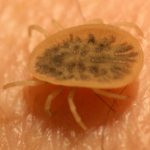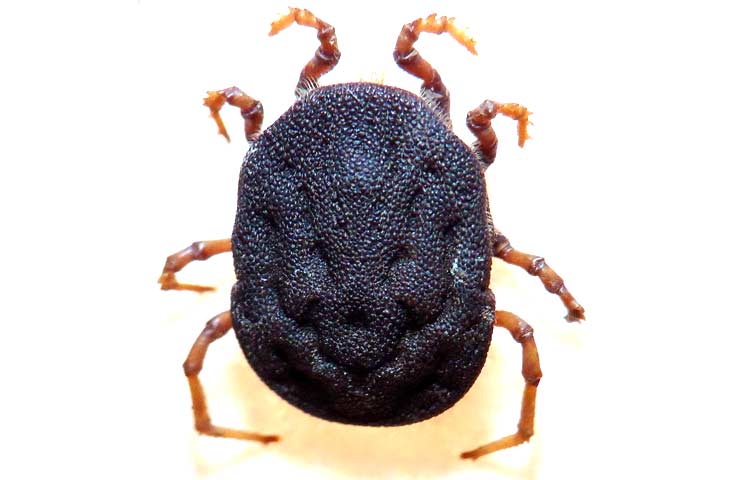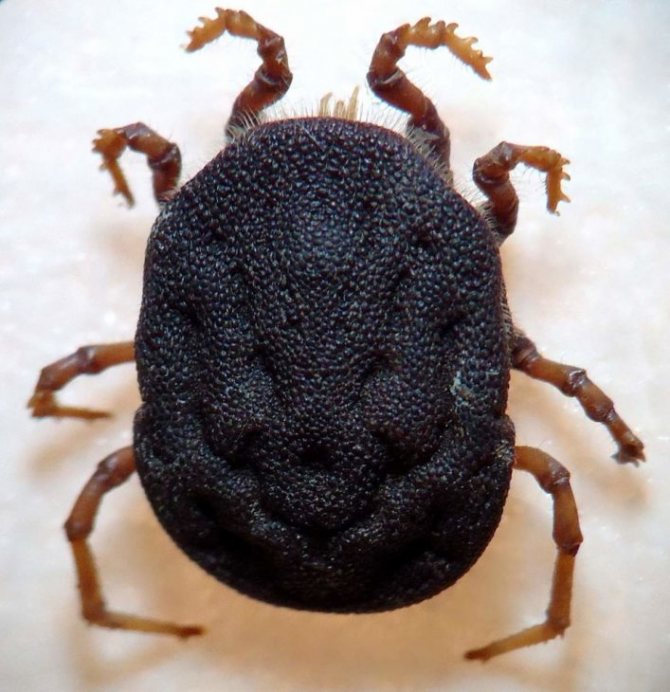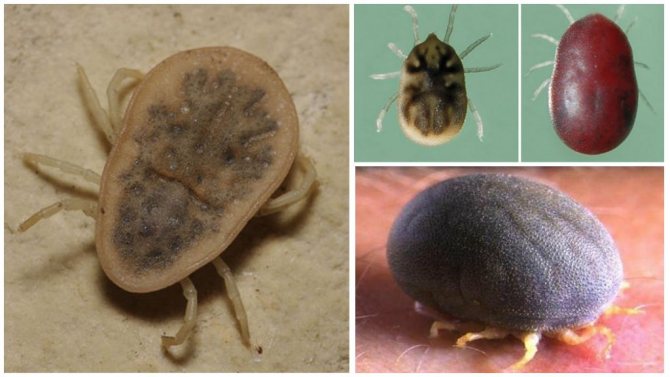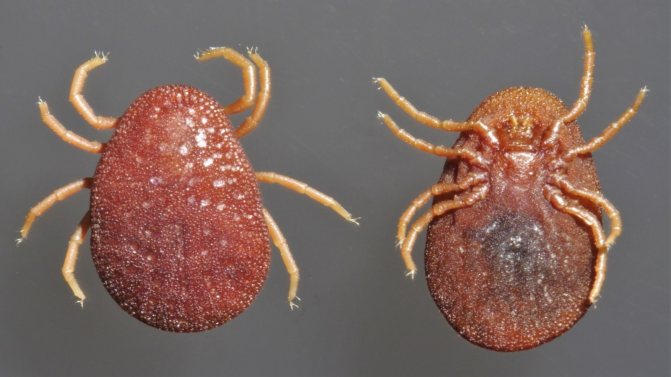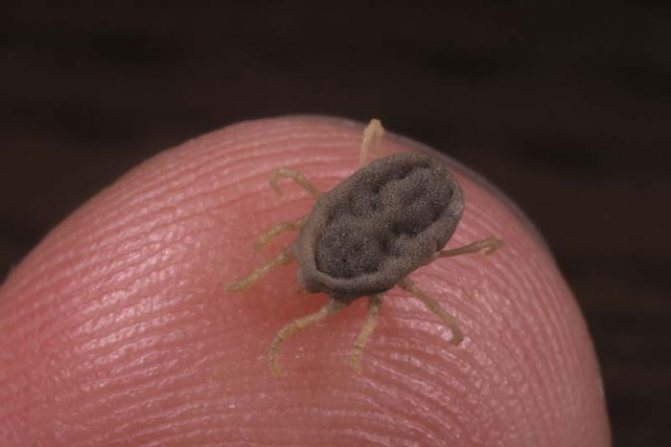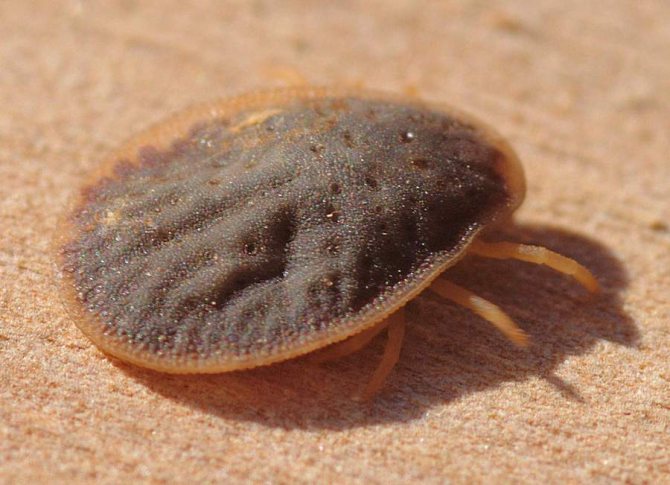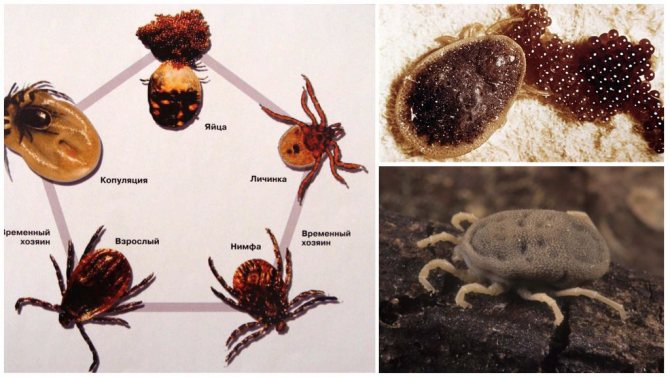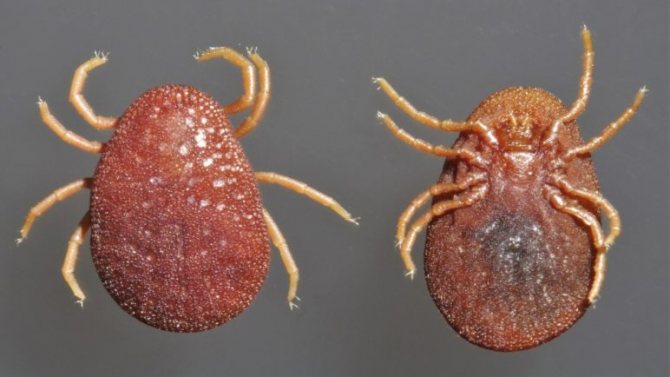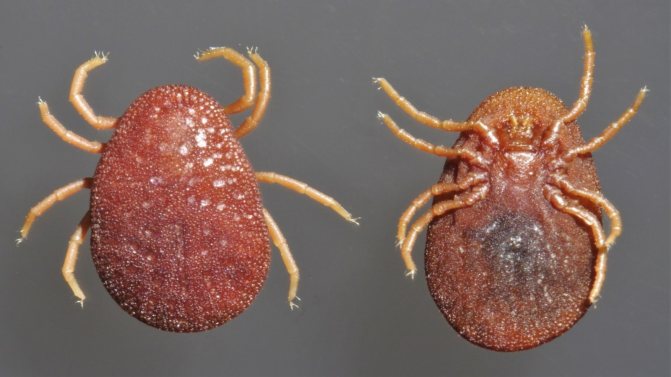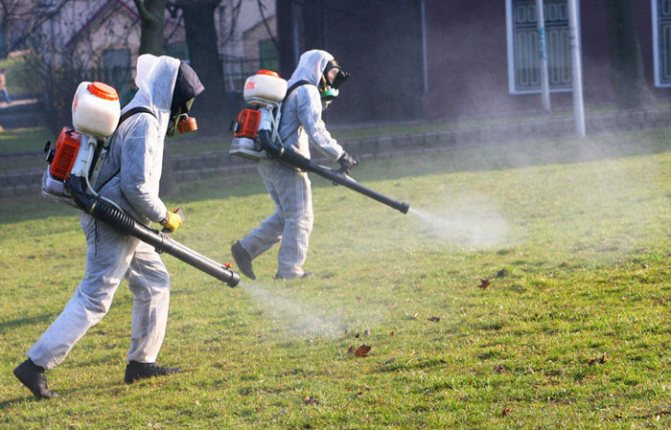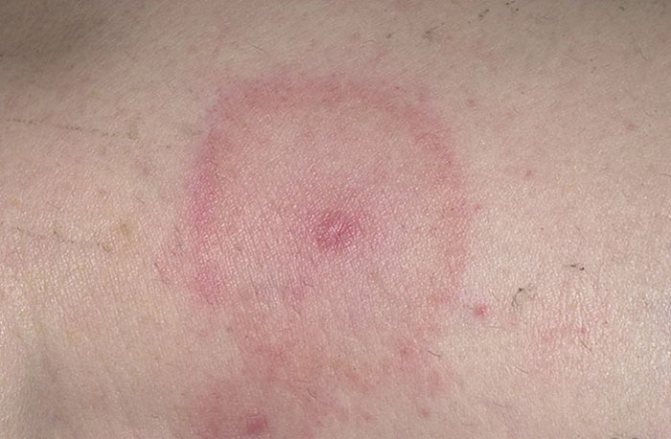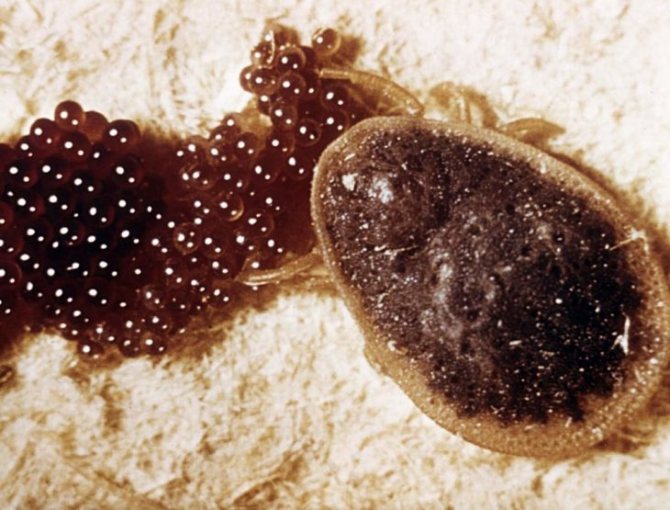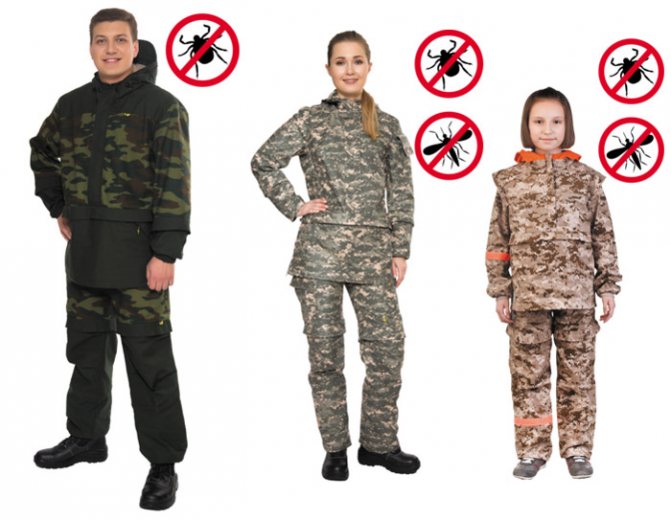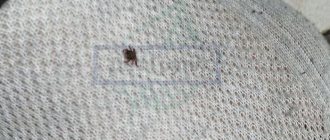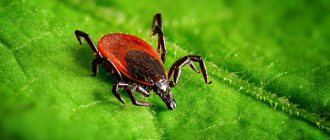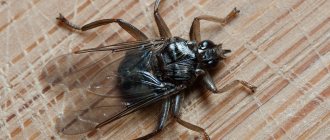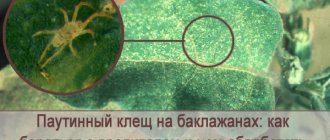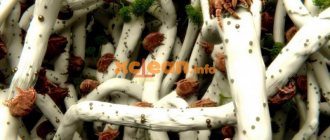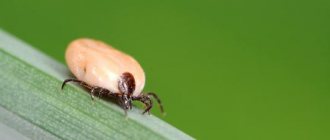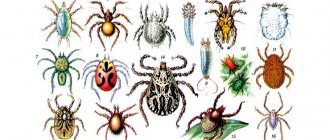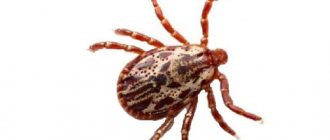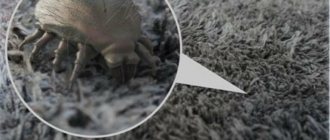There are 2 types of argas mites: ornithodorins and argazins. In the common people, these ticks are called soft ticks or trapping ticks, since they have soft covers of the body and hide in secluded corners, for example, in holes, caves, nests, grottoes, crevices. In addition, they settle in the crevices of clay buildings, sheds and other utility rooms.
In total, 100 species of ticks are distinguished in this family. They live in different parts of the world, 9 ornithodorin and 10 argazin live in our country. Argas mites are found in Central Asia, Kazakhstan, the North Caucasus and Transcaucasia.
The habitats of argas mites are deserts, steppes, foothills and semi-deserts, but some species are found in the forest-steppe zone and high in the mountains.
Argas mite appearance
Argas mites are one of the largest, their body sizes vary from 3 to 30 millimeters. The body is flattened, oval in shape. The cover of the body is leathery.
In some species, the body has a frame around the entire perimeter. The proboscis is located on the belly, so it is not visible from above.
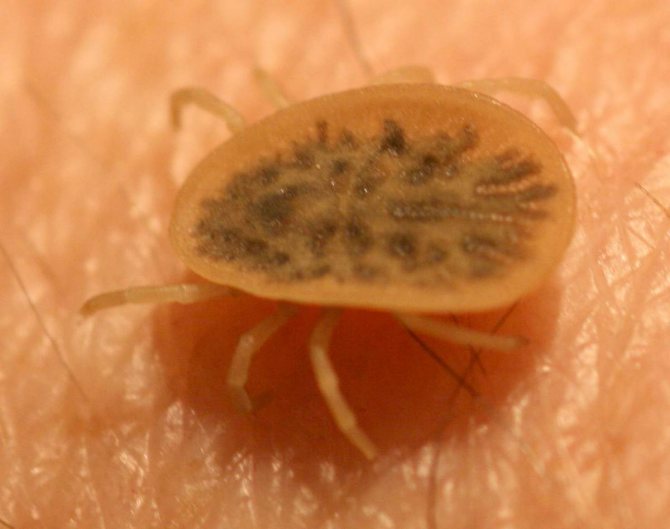
Argas mite (Argasidae).
The color of a tick changes depending on its condition - a hungry tick has a grayish color, and a well-fed tick is yellow-brown.
How to handle animals
Ticks attack animals in the autumn-winter period, when larvae form from eggs, or the larvae turn into nymphs.
Before processing the room in which the animals are kept, it is necessary to seal up all the cracks, holes, holes. Animals are taken out of the room.
- 1.5% chlorophos solution;
- benzophosphate solution;
- a mixture of chlorophos and DCVF ("Aerol2").
For the purpose of prophylaxis, animals are treated with acaricidal preparations. But for sick animals, acaricides are useless. The help of a veterinarian is needed.
Watch this video to learn about all the dangerous types of ticks:
Reproduction of argas mites
During its life, the female argas mite lays eggs several times. The life span of these ticks is long - 15-25 years. Females lay eggs in summer and autumn.
The larva is flat when hungry. She has long and slender limbs. The oral apparatus is pushed forward. The stage of the larva is replaced by the stage of the nymph, which is transformed into an adult.
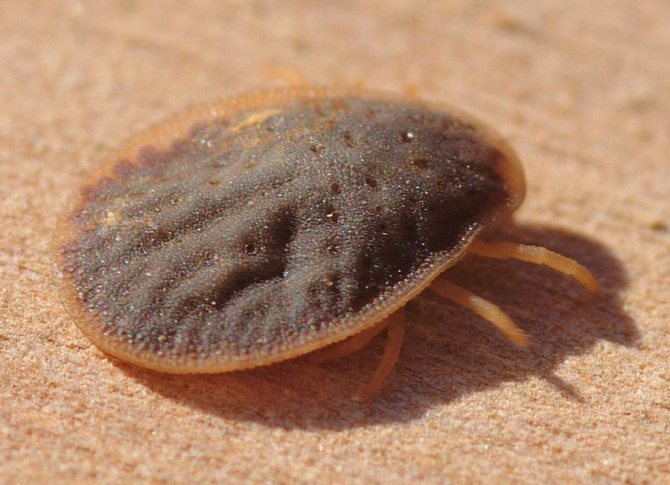

Argas mites can go without food for up to a year, and their larvae are twice as large.
The development of argas mites is dependent on nutrition and the environment. Larvae and adults of this species endure hunger. Adult argas mites in a hungry state can live for several years, and larvae - from six months to 2 years.
Lifestyle
Unlike ixodids, the life cycle of the argas fauna is longer. Under favorable conditions, the life span of females is 11 years. There are known cases of longevity among Argazids - 23 years. This is facilitated by the peculiarities of nutrition, reproduction, as well as the ability to enter diapause - to starve for a long period while waiting for the owner.
At all stages of development, with the exception of the egg, individuals feed on blood. The suction process is painless for the victim and can last from several minutes to 2 hours. But on average, feeding lasts 15 minutes.
On a note! The main difference between the Argas female and the ixodic female, which lays offspring at one time, is the ability to lay eggs repeatedly after each feeding.
The full development cycle includes:
- egg;
- larva;
- nymphal phase;
- imago.
Mating of adults can occur both before and after replenishment of nutritional reserves. Like ixodids, hungry females rarely lay eggs. But after saturation, they lay eggs in small batches of 50 - 200 pieces in secluded places, again look for a source of food and give life to new offspring. The number of gonotrophic cycles usually does not exceed 6.
Under favorable conditions, after a few days, larvae appear from spherical eggs. They are very active. The differences between larvae and imago lie in a rounder body, longer limbs, and small size. They quickly find a victim, receive a portion of blood and fall into the forest floor, sand for molting.
After molting, the larvae pass into the nymphal stage, there are three of them, but in some species the number of nymphal molts reaches 7. A characteristic feature of argas mites is the number of nymphal stages is inconsistent even within the same species and depends on conditions, availability of nutrition and sex. At this stage, the individuals develop leathery folds characteristic of argas mites.
Interesting! Nymphs are unique. Immediately after feeding, the coxal glands produce a secretion that eliminates excess moisture in the blood plasma. This factor contributes to the fact that individuals need less biomaterial for saturation, and their digestive system spends less resources for digestion.
On average, the development cycle from egg to adult is 2 years.
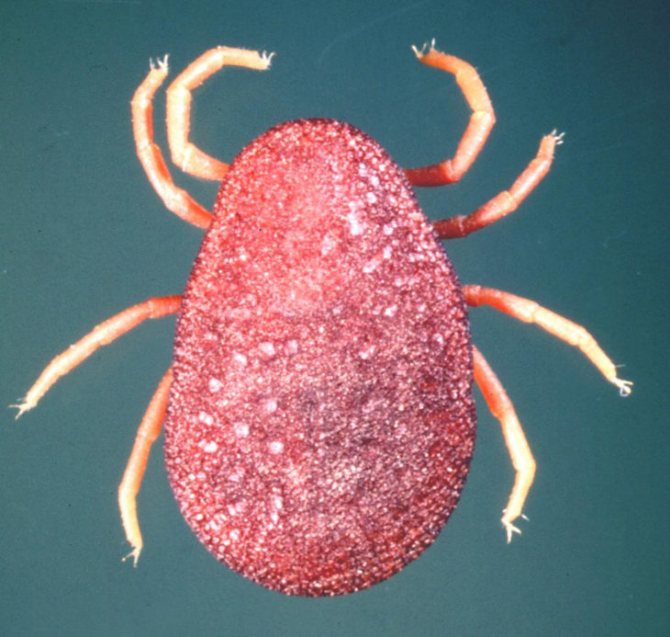

Feeding argas mites
The basis of food for this species of ticks is the blood of animals, birds, and sometimes humans.
Argas mites usually hunt at night. Most of these insects parasitize vertebrates.
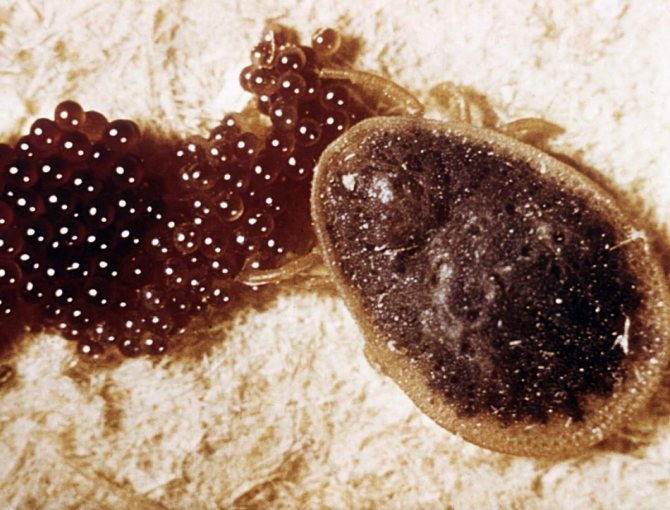

During its existence, the female argas mite lays eggs several times.
Each species has its own food sources, for example, mites parasitize horses, camels, donkeys, small cattle, chicken mites - on poultry and chickens, village ticks on dogs, cats, horses, livestock.
What are the types
The mite Ornithodorus coriaceu lives in Mexico, and the peasants are as afraid of these ticks as they are of poisonous snakes. The bite of this insect causes severe pain. The following types of insidious insects are most studied and often found in the table.
| Tick name | Habitat areola | Whose parasite | What is dangerous |
| Mite Caucasian Ornithodoros verrucosus and Alectorobius asperus | distributed in Transcaucasia, in the south of Ukraine. | prefers goat and dog blood. In the absence of these, it sticks to a person. | carrier of borrellia - bacteria that provoke relapsing fever. When bitten by an insect, borellium enters the bloodstream. |
| The Persian tick (Argas persicus) is from the genus of tick-shields. In the east it is called malé | A wide habitat covering the southern regions of the European part of Russia, southern Ukraine, the Volga region, the Caucasus, Crimea, the south of western Siberia, Kazakhstan and Central Asia. | It lives next to humans. The tick creeps up to people at night during sleep, pierces the skin, causing pain, and sticks to the bloodstream. | It is known to be a carrier of malignant fever, from which people die quite often in the countries of Egypt and Iran. |
| Village tick (Ornithodoros papillipes) and Alectorobius Tholozani | Distributed in Iran, Afghanistan, India, the republics of Central Asia and Kazakhstan. | transfer from the patient to the healthy tick-borne borelliosis and endemic (tick-borne) typhus. Borellias enter the human body through the proboscis, with which the insect pierces the skin, and due to the ingestion of toxic products of insect excretion on the body. | |
| Shell mite (Argas reflexus) | lives in the countries of Europe, Asia Minor. It is found in Africa and North America, | It is considered a parasite of pigeons, rarely sticks to other birds. It can also stick to a person if experiencing severe hunger. | In humans, it causes severe allergic reactions, up to anaphylactic shock. Experts suspect that this tick carries fever. |
| Kosharny, or Alveonasus lahorensis | Lives in the southern regions, in Central Asia in the countryside, in kennels. | It parasitizes sheep and camels. It feeds on the blood of cattle (both small and large), horses, camels, donkeys and dogs. Hungry ticks attack humans. | Spreader of a variety of diseases in animals and humans |
The mite has an elongated, pointed to the front, body shape 8-10 mm long. The insect lays eggs, from which larvae form after 2-3 weeks. Animals attack in autumn. Kosher mite provokes the following diseases:
- infectious blood diseases in sheep - anaplasmosis theileriosis;
- trypanosomiasis in camels;
- brucellosis in most domestic animals, which is transmitted to humans.
- equine encephalomyelitis,
- rickettsioses - human diseases that have several different forms, which are divided into two groups: typhus and fever;
- damage to the lymph nodes - tularemia in humans.
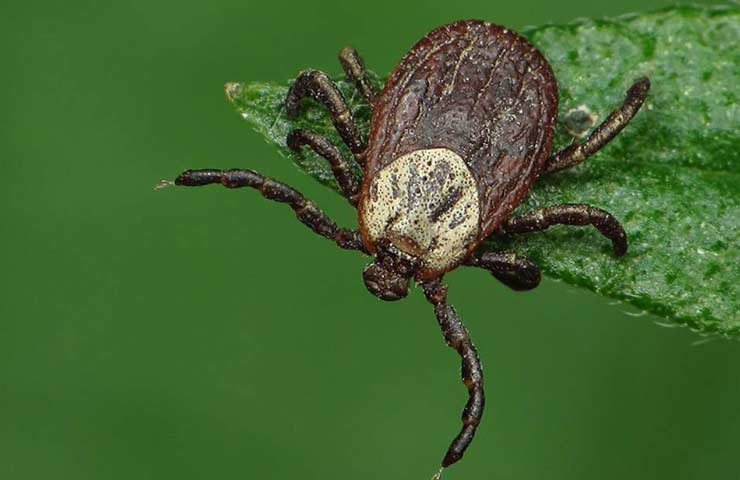

One of the varieties is the Koshary mite.
The larvae, attached to the body of the sheep, feed intensively, molt, turn into a nymph, continuing to remain on the animal. The nymph feeds, molts three times, falls to the ground. The larva turns into a nymph within 1-1.5 months. From the nymph, the imago will form in a few more months. The insect develops up to 1.5 years.
In the absence of nutrition, ticks can starve for 7-10 years.
Argas mite harm
If you do not take timely measures to exterminate argas mites, then their massive attack on the animal can cause him a significant loss of mass and destruction of the skin. In addition, the saliva of argas mites contains toxins that, penetrating into the blood of the animal, can provoke paralysis. If the animal is not treated, then after 20-30 days it will die from the harmful effects of the parasite.
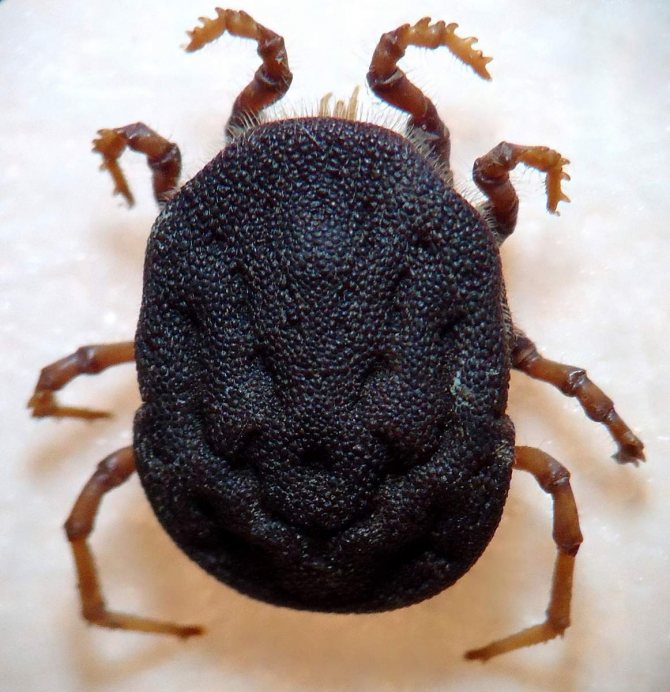

Argas mites are carriers of serious diseases - relapsing fever and hemorrhagic fever
Treatment consists of removing parasites from the body and treating with acaricides. In the herd, the disease spreads after 12 days. Animals infected with argas mites behave extremely restlessly and constantly itch. Then the state of the animal becomes depressed, it trembles and cannot stand on its feet. Foam comes out of the mouth, pupils dilate, and breathing becomes rapid. In this condition, the animal dies after 5 days.
The biggest danger of argas mites is that they can attack humans in search of food. As a rule, this happens at night, but sometimes these ticks bite during the day. The argas mite drinks human blood for no more than an hour. The bite is painful, in addition, it can provoke allergic manifestations. The bite site itches a lot.
Some argas mite species carry infectious diseases. The infection is transmitted within 1 minute. The most dangerous diseases that argas ticks carry are relapsing fever and hemorrhagic fever. If a person is bitten by a tick, he immediately needs a doctor's consultation, since the disease can develop rapidly.
If you find an error, please select a piece of text and press Ctrl + Enter.
Animal protection methods
In order to get rid of argas mites, it is necessary to process the infected premises. First of all, cracks, holes and cracks are closed. Then the walls and floor, ceiling and fences are treated with special insecticides. This is done only after all the animals are taken out of the barn.
The following drugs are used as solutions:
- chlorophos 1.5%;
- benzophosphate;
- aerol-2.
At the end of the disinfestation, the room must be left and closed for several hours.Then it should be well ventilated and run animals, which, for preventive purposes, should also be treated with acaricides. However, these drugs are powerless if the parasites are already on the body.
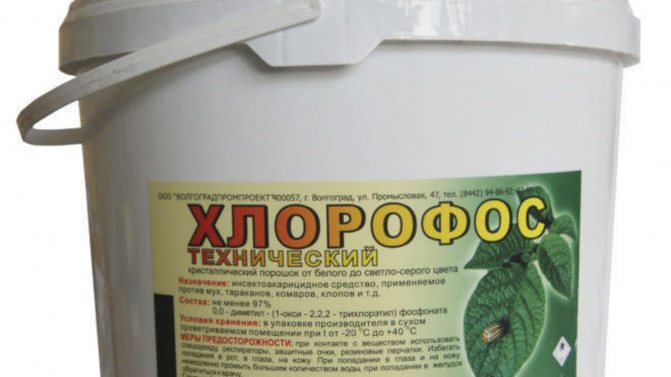

It is important to take into account that the use of such drugs in the summer can cause toxicosis, especially for young and pregnant animals. To prevent this from happening, it is recommended to apply acaricides at night, when the room is not so hot.
Mute about ticks
Many people consider ticks to be insects, but in fact they belong to the class of arachnids. In the modern world, there are more than 50 thousand different species. Some of them do not pose any threat to humans, others are capable of doing a little harm, and there are representatives that are carriers of various diseases that are fatal to humans and animals. Therefore, you need to fight ticks, use protective equipment when going outside and immediately destroy them if they start up at home.
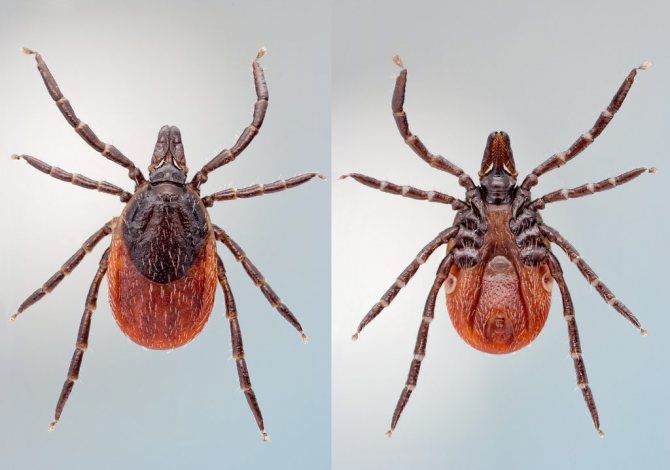

The pliers do not exceed 3mm in size. As a consequence, they are not easy to detect. Tick species are divided into two large groups based on their eating habits: saprophages and carnivores. Saprophages feed on organic debris. They do more harm in agriculture. But predatory species, on the contrary, feed on animals and plants. It is this species that poses the greatest threat to all living organisms. There are species that simply drink blood and fall off, but there are those that carry dangerous viruses that are fatal to humans.
Ticks live everywhere. Some species are quite rare, others are more common, but the species' habitat covers the entire planet. Even in the water there are representatives of parasites. But still, the main places of their accumulation are forests and meadows. Premises for storing agricultural products are also favorite places, but such species are generally not dangerous to humans. Pets are especially affected by ticks. After walking with your pet, be sure to check it for parasites.
Some species settle in houses, so precautions even at home will not be superfluous.
Prophylaxis
The fight against ticks should consist of preventive and exterminating measures.
- The main preventive measure is the timely vaccination of people and pets.
- Nearby areas should be cleared of dry grass, branches and shrubs. All this is collected and burned.
- After completing work on the street (especially if it was carried out near tall grass or bushes), you must take off your work clothes, examine the body and take a shower. It should become a habit. Especially in regions where there is a large population of ticks.
Treating trees in the fall from pests is a necessary and mandatory method of prevention. Do you have conifers in your garden? You will definitely enjoy this article!
Contrary to all our advice, you did not save yourself and you were bitten by an insect? You will like this material on the link.
What does a parasite bite look like?
The first thing that catches your eye is discoloration of the skin at the site of suction... A bright red rim is formed around the bite, with a pronounced nodule in the center. If you do not take any measures, the nodule will begin to grow and eventually develop into a papule with local hemorrhage.
About for 2-5 days, the bite site begins to itch strongly, but scratching it is prohibited, this can provoke the development of an ulcer. A specialist should deal with the elimination of this symptom. If nothing is done, itching can last up to 20 days.
With proper treatment, three weeks is enough for the signs of the bite to disappear.
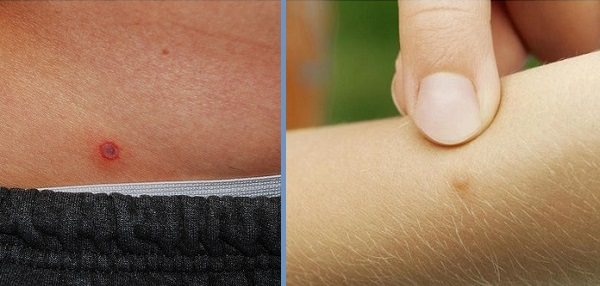

It is also useful to read: What are the ICD-10 diagnosis codes assigned to a tick bite?
Tick life cycle
Parasites belong to the lurking forms of bloodsuckers, are incompletely developed and reproduce by two individuals - male and female. The life cycle, according to habitat conditions, the presence of favorable factors, can last for several months or years.
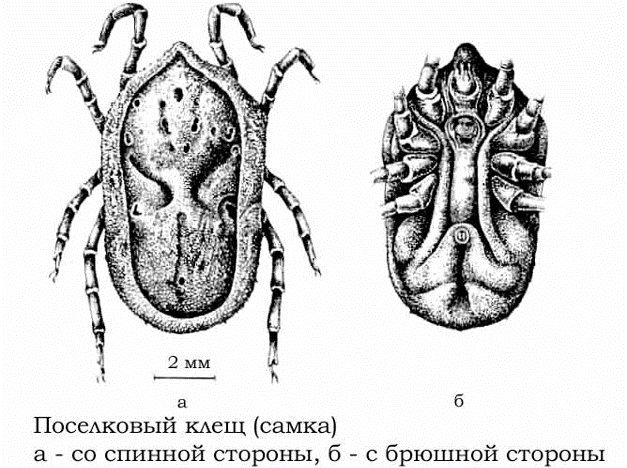

Tick morphology includes several stages of development.An adult is characterized by an average size, it can reach 2–30 mm. The skin is able to stretch, due to which the tick eats several times its size.
Features of the physiological structure:
- body shape is oval;
- the front end is pointed;
- coxal glands are located between the legs;
- not far from them there is a genital and anus;
- eyes are missing.
The fingers are four-segmented in structure, do not have suckers. Their size and structure are about the same.
Among the development of ticks, sexual dimorphism is well observed, which is characterized by the difference in the shape, size of the male and female individuals. The second is several times larger, has a slit-like genital opening.
The eggs of the parasites are oval, yellow-brown in color. The larva has a delicate skin. The nymph looks like an adult, has 2–7 stages of formation, and is incapable of reproduction. With the course of development, the structure of the nymphs is closer to a sexually mature individual.
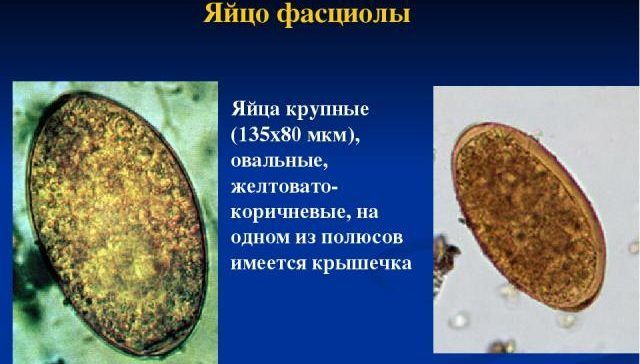

Distribution area
Ticks are distributed all over the globe, settlement is found on all continents except Antarctica and the Arctic. The favorite habitat of the parasite is the subtropical, tropical and temperate zones, most often the village tick can be found in Central Asia, namely in the mountainous and foothill regions of Kazakhstan. It is here that the most suitable weather conditions for the fastest flow of all stages of development.
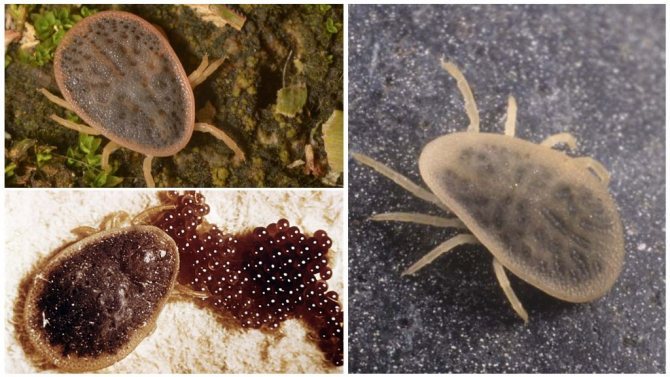

Village tick
Harm to humans and animals
For humans and animals, only the larval stage of red bovine ticks has the greatest pathogenicity. Of the numerous superfamily Trombea, few are aggressive towards humans.
Particular attention is paid to the massive attack of larvae, which results in various diseases.
The most common type of dermatitis is thrombidiosis or autumn erythema. The initial effect at the site of the bite is the appearance of a red spot. There is severe itching, worse at night.
The presence of papules up to 3 mm in diameter with concomitant peripheral infiltration is characteristic. Until the fifth day, there is a tendency to an increase in the papule, its vesicular degeneration, and then ulceration. After eight days, the vesicle dries up, and the infiltrate dissolves - a gradual reverse development of the papule occurs. A dark spot at the site of the bite can persist for two weeks.
Scratching leads to secondary infection and the formation of pustules and ulcers.
Red beetles cause Japanese river fever tsutsugamushi or bush typhus. Tsutsugamushi is first registered in Japan. Carriers in natural foci are red bovine mites at the larval stage, and various small rodents, insectivores and marsupials are a kind of reservoirs. Fever is an acute infectious disease with an incubation period of 4-10 days. The high temperature is accompanied by the appearance of a papular rash and an enlarged spleen. The conjunctiva of the eyes is sharply hyperemic. A severe course is complicated by cardiovascular disorders, cerebral events, pulmonary complications such as pneumonia. Mortality reaches 30%.
In the literature, data have been recorded on the isolation of the causative agent of Q fever and the causative agent of rat typhus from red bovine ticks.
In foreign languages
- Hoogstraal, H. (1985). Argasid and nuttalliellid ticks as parasites and vectors. Advances in Parasitology, 24, 135-238.
- Keirans, J. E. (1992). Systematics of the Ixodida (Argasidae, Ixodidae, Nuttalliellidae): an overview and some problems. In: Fivaz, B., Petney, T., Horak, I. (Eds.) Tick vector biology. Medical and veterinary aspects. Springer — Verlag, pp. 1-21.
- Klompen, J. S. H .; Oliver, J. H., jr. (1993). Systematic relationships in the soft ticks (Acari: Ixodida: Argasidae). Systematic entomology
,
18
: 313-331. DOI:
This page was last edited on 5 July 2020, at 11:04.
Destruction of ticks in nature
Ixodid ticks lay eggs on the ground, and some ticks choose wet places for laying, others dry, and still others forest. If these conditions are violated, then the eggs of the ticks and the ticks themselves often die.To violate the living conditions of ticks in natural conditions and in order to destroy ticks at different stages of development, they carry out isolation and change of grazing areas, agricultural activities (plowing virgin lands, reclamation of swampy pastures, weeds and weeds in autumn and spring, destruction of murine rodents), use chemical methods as well as natural enemies of ticks.
Isolation and change of pastures
are used in the fight against Boophilus calcaratus ticks, as well as Rhipicephalus bursa, which feed only on pets. The main requirement when changing pastures is not to allow domestic animals to enter the ticked area of the pasture for the period during which the ticks die of hunger (Boophilus calcaratus in 6-7 months, Rhipicephalus bursa in ten months). If you graze livestock on each site for 25 days (the development of a Boophilus calcaratus tick from larva to a sucking female takes 21-24 days) and returns to the previously used area after seven months, you can free the pasture from this species of ticks in one year.
The alternation of lowland (winter) and mountain (summer) pastures in the south of the country plays an important role in the control of Boophilus calcaratus and Rhipicephalus bursa ticks. It is necessary to drive cattle to subalpine pastures in spring before ticks become active (cattle in early April, and sheep no later than mid-May). Against most ixodid ticks, the change of pastures is ineffective, since these ticks are able to starve for a longer time (more than one year) and can feed not only on domestic animals, but also on wild animals.
Agricultural activities
carried out in the habitats of ticks. This creates unfavorable conditions for the life of ticks in pastures and in other places, as a result of which the number of ticks and other parasitic arachnids decreases in nature. Depending on the natural conditions and the species composition of mites, certain measures prevail in the complex of agricultural measures.
Melioration (drainage)
swampy and low-lying pastures leads to a change in the habitats of moisture-loving mites in an unfavorable direction for them, as a result of which their mass death occurs.
Burning out in autumn and spring
in some areas of pastures of high dry grass, weeds and weeds, which serve as a refuge for ticks and their hosts - small wild animals, it contributes to a sharp decrease in the number of mites in these places.
Deep plowing, disking and harrowing
pastures, destruction of hummocks, shrubs, sowing of annual and perennial grasses on natural pastures are important links in the fight against ticks.
Chemical methods
the fight against mites in natural conditions is sometimes carried out by spraying acaricide dusts with the help of helicopters and airplanes, and in limited areas - with the help of special dusters.
Natural enemies of ticks.
Noteworthy is the parasitic insect (Hunterellus hookeri), the female of which lays up to 20 eggs in the body of ixodid tick nymphs. The larvae hatched from the eggs of the wasp cause the death of ixodids (only the chitinous membrane of the tick remains). A significant number of ixodids are eaten by birds, as well as lizards; molds are dangerous for them, the hyphae of which penetrate the body of the ticks.
Ways to protect yourself from field tick bites
Measures for the control and prevention of field tick bites are the same as for contacts with other ixodid ticks that live everywhere. Repellents and acaricides provide sufficient protection against ticks and other bloodsuckers. Many devices have appeared on the market that allow you to competently remove a tick from a wound without leaving a proboscis in it, which resembles a harpoon with its notches. For those who spend a lot of time in critical areas, there are special suits that exclude the possibility of a bite. But the surest way to avoid danger is to detect it in time.You can order tick eradication in your area by calling Doctor-Forest.
How to handle birds and territory
If a bird is attacked by a chicken mite, it is treated with carbaryl dust or chlorophos dust. For each bird, 5 grams of one of the solutions is used. Carbaril has a nerve-paralyzing effect on insects, while even if absorbed into the skin, it does not accumulate in the body.After some time after treatment, the entire bird must be examined and ticks removed.
Chicken coops are treated with the same solutions. In this case, possible places for laying eggs, minks, where the larvae and nymphs of ticks can live, are necessarily opened and are also carefully processed. After processing, the cracks and holes must be closed. When processing the habitats of animals and birds, you should also inspect the nearest trees. And if insects are found in the bark, trees should also be treated with hexachlorane emulsion.
Processing of premises
Standard methods
- Ticks love to crawl into crevices. Therefore, in order to rid the room of a colony of parasites, it is necessary to lubricate all the cracks in the walls, as well as the space between the wall and the baseboards with 0.25% sevin suspension.
- The treated areas are sealed with plaster.
- Then the entire room is treated twice using acaricides. There should be an interval of 10–20 days between treatments.
- A 0.25% aqueous solution of chlorophos or trichlorometaphos is used at the rate of 200 milliliters per square meter.
Traditional methods
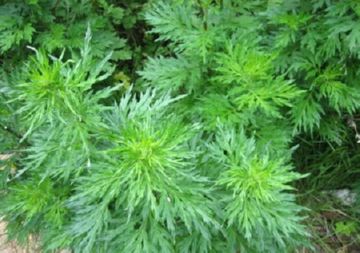

- To keep pets safe, proven folk methods are well suited. Various essential oils, for example, are quite effective. Their pungent smell scares off blood-sucking parasites. The only drawback is the short-term validity. Such protection is enough for only two to three hours.
- Clove, tea tree, or lavender oils work well. Fifty drops of oil are mixed with 50 milliliters of water. The resulting solution is rubbed with dogs and cats. The product can also be used to treat puppies or kittens under two months of age.
- The floors in the house in the country can be washed with a decoction of wormwood. The herb is brewed by eye. Fresh plants are taken along with roots. The smell of this product is sharp and unpleasant even for humans. This is especially noticeable during the preparation of the broth.
If folk remedies and treatment with chemicals did not bring the desired results, it is better to use the help of professional pest controllers. After the first treatment, ticks may develop immunity. A more powerful (and dangerous for humans) drug will be required, the processing of which will require additional protection measures and accurate dosage.
Diseases carried by the settlement tick to humans
Infection from a sick parasite occurs at the time of a bite and regurgitation of saliva (or an excess of food) by a tick into the blood. It is also possible to "borrow" any serious illness through the secretions of an infected insect left on the skin.
The main condition for the transfer of infection is that the insect itself should already be sick at the time of the bite. Females infected from the previous breadwinners (rodents, birds, etc.), naturally, give already knowingly infected offspring.
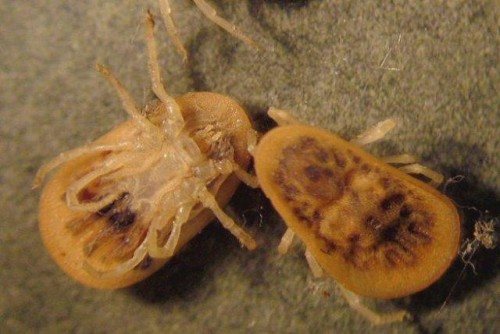

Settlement ticks can infect humans or animals with very serious diseases:
- relapsing fever;
- encephalitis;
- tick-borne spirochetosis (Central Asian form);
- tularemia;
- fever (typhus), etc.
Ticks spend part of their life in nests of birds, holes of rodents, which could already be infectious at the time of the tick's attachment to them. Accordingly, a parasite that has drunk their blood also falls ill from sick animals.
A tick can be "adhered" to itself in nature, or it can be accidentally brought directly into the home by a pet. The bite of a sick tick at any stage of development can provoke an epidemic of typhoid or encephalitis in pets.
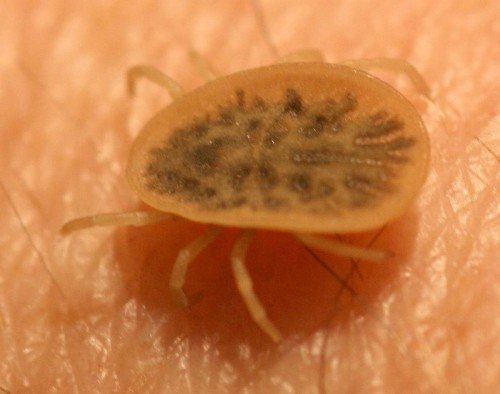

Through the proboscis, an infected tick can transfer into the blood of a victim of Borrelia (and there are about 30 species of them).And now these pathogens lead to various fevers (more often to the Central Asian form).
Also, saliva injected by the parasite into the victim's blood can provoke the development of dermatitis or allergies.
After an attack of a village tick, you can protect yourself in time by urgently contacting a doctor, especially since the bite site has characteristic signs, and it is difficult to confuse this with anything else.

